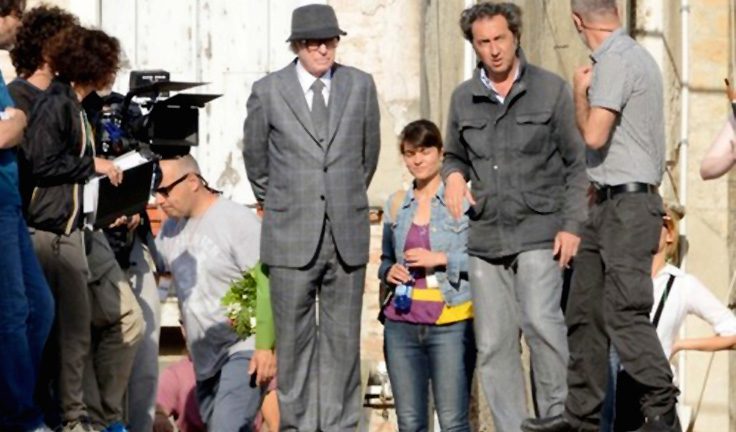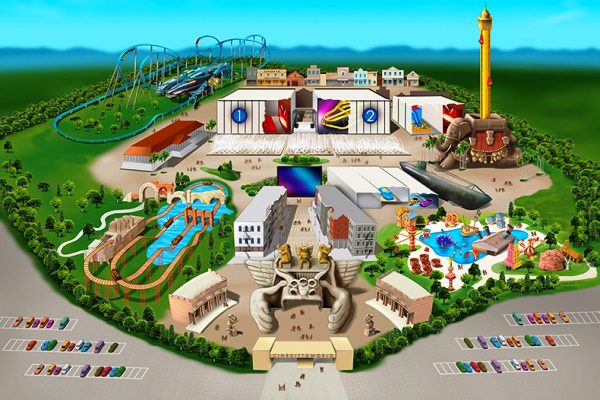I’ve written a few articles about the classics of Italian cinema on my blog because I feel like certain films do a great job of teaching some of the nuances of Italian culture to us foreigners. Taken in their proper context, they can help bridge the gap between fantasy and reality. That is, if we’re willing to challenge our fantasies about Italy.
Many of these movies aren’t so easy to appreciate because there are culture references that don’t translate well. Indeed, the translations found in the subtitles aren’t always linguistically accurate—or if they are, the meaning/context is lost. We can’t always substitute one thing for another, whether it’s a word or a gesture or a custom.
Consider the film with the English title, The Bicycle Thief. In Italian, it’s called, I Ladri di Biciclette. Notice that the subject is plural in Italian, The Bicycle Thieves, and not Thief, like in the English title. It may seem like a subtle point, but when presenting the film to the Hollwood-ized (read: American) audience, the focus on the individual seems like a wise marketing decision. Hollywood movies are all about the individual hero struggling against odds to overcome his obstacles and enemies. Social commentary—and especially socialism—were not big on the minds of American producers in the 40s and 50s. (Nor are they today, for that matter.)
For precisely this reason, I’d like to suggest that watching Italians movies is a wonderful way to improve your understanding of both the language and the culture at large. By observing these nuances, you begin to “understand” more than you can actually learn by reading or studying. Let’s take a quick survey of some classics of Italian cinema and see what they can teach us.
(And if you read Italian, check out what Jessica has to say about the stereotypes of Italians in film.)
Classics of Italian Cinema
Roma, Cittá Aperta – This is not the first big movie from Italy (that would have been Cabiria in 1914), but it’s the one that put neo-realism on the map. There are no movie sets, only the real day-to-day scenes of Rome. The camera doesn’t move much, so it feels a lot like a documentary. Pay particular attention to the role of children in this film. They seem mature beyond their years, almost adults, perhaps representing a generation of new hope for post-war Italy.
 Ladri di Biciclette – If the aforementioned “Rome, Open City” started neo-realism, then this film defined it. Again, shot in the streets of Rome, using non-professional actors. Director Vittorio De Sica uses the real-life environment of contemporary life to frame his emotional drama of a desperate father whose new job is threatened when a street thief steals his bicycle.
Ladri di Biciclette – If the aforementioned “Rome, Open City” started neo-realism, then this film defined it. Again, shot in the streets of Rome, using non-professional actors. Director Vittorio De Sica uses the real-life environment of contemporary life to frame his emotional drama of a desperate father whose new job is threatened when a street thief steals his bicycle.
De Sica’s camera doesn’t move much, either, but it does rotate on its axis, giving us the sensation that we are looking through the eyes of the main character. This film received an honorary award from The Academy in 1950. Again, notice the child co-star, who at certain points in the film seems more mature than his father.
 La Dolce Vita – Fellini’s classic follows the “sweet life” of a tabloid journalist who covers the glitzy celebrity world in Rome. In constant search for the next big scandal to write about, he is seduced by the decadent life led by Rome’s pampered rich, distracting him from anything resembling a real human connection. There are still some hints of neo-realism, but already we see strong elements of Fellini’s journey towards a more dream-like representation, which reaches its full expression a few years later in 8 1/2.
La Dolce Vita – Fellini’s classic follows the “sweet life” of a tabloid journalist who covers the glitzy celebrity world in Rome. In constant search for the next big scandal to write about, he is seduced by the decadent life led by Rome’s pampered rich, distracting him from anything resembling a real human connection. There are still some hints of neo-realism, but already we see strong elements of Fellini’s journey towards a more dream-like representation, which reaches its full expression a few years later in 8 1/2.
One common interpretation is that the film can be divided into a prologue, seven major episodes interrupted by an intermezzo, and an epilogue. If the evenings of each episode are joined with the morning of the preceding episode, together they would make one given day. Therefore the entire film would consist of seven consecutive days, creating seven vignettes of Marcello’s life. The epilogue takes place sometime in the future, as we see that Marcello has changed, both physically and behaviorally.
But the “sweet” life? Hardly. Fellini was being ironic.
 Cinema Paradiso – This movie is told almost entirely as a series of flashbacks—a young boy’s lifelong love affair with the movies as recalled by his adult self. Set in a small Sicilian village, Salvatore finds himself captivated by the flickering images at the Cinema Paradiso, yearning for the secret of the cinema’s magic. He eventually becomes a famous director living in Rome, detached physically and emotionally from his humble beginnings until he learns of the death of his mentor. Very effective for creating a sense of nostalgia for the lost innocence of youth and a simpler life. The soundtrack by Ennio Morricone is evocative and indeed was nominated for several awards.
Cinema Paradiso – This movie is told almost entirely as a series of flashbacks—a young boy’s lifelong love affair with the movies as recalled by his adult self. Set in a small Sicilian village, Salvatore finds himself captivated by the flickering images at the Cinema Paradiso, yearning for the secret of the cinema’s magic. He eventually becomes a famous director living in Rome, detached physically and emotionally from his humble beginnings until he learns of the death of his mentor. Very effective for creating a sense of nostalgia for the lost innocence of youth and a simpler life. The soundtrack by Ennio Morricone is evocative and indeed was nominated for several awards.
La Vita è Bella – The most successful foreign language film in U.S. history, the picture also earned director-cowriter-star Roberto Benigni Oscars for Best Foreign Language Film and Best Actor. He plays the Jewish country boy Guido, a madcap romantic in Mussolini’s Italy who wins the heart of his sweetheart (Benigni’s real-life partner, Nicoletta Braschi) and raises a darling son in the shadow of fascism.
I challenge anyone to watch this film without shedding a tear at the end. How is it that Benigni can make us laugh and cry at the same time?
The next Fellini?
I think I’ve said enough about Sorrentino’s film, The Great Beauty, in other posts, but I was excited to learn recently that he’s currently shooting his latest project in Venice. The word is that he’s again filming in English, as he did with This Must Be the Place, with Sean Penn and Frances McDormand.

This new film is called, “Youth,” and it stars Harvey Keitel, Michael Caine, Rachel Weisz, and Jane Fonda. It’s due to be released in the spring of 2015. Written by Sorrentino, it’s the story about two old friends on vacation in the Alps. According to Variety:
“Youth” turns on Fred and Mick, both knocking on 80 — one a long retired composer-conductor, the other a still-jobbing film director — who are vacationing together in an elegant hotel in the lap of the Alps.
Sensing their time could be quickly running out, they decide to face the future together, regard with curiosity and tenderness their children’s confused lives, the enthusiasm of Mick’s young writers and the other guests at their hotel.
Mick is scrambling to finish what he imagines will be his last important film. Fred gave up his music career a long time ago. But there is someone who wants at all costs to hear his compositions and to see him conduct again.
Hollywood kitsch invades Rome
If the classics of Italian cinema are something that you also enjoy, you might consider a trip to Cinecittá the next time you’re in Rome. It’s Italy’s version of Universal Studios and you can walk right onto the set of some of your favorite movies. I made a visit to the studios a couple years ago, and I wrote about the experience on the website, Italian Talks, by Baglioni Hotels.
My visit to Cinecittá was back when the studios merely offered a humble tour through the sound stages and prop warehouses. For that, I’m glad, because recently they have opened “Cinecittà World,” a bizarre theme park where the classics of Italian cinema meet the kitsch of an American carnival.
You would think that with all the historical sites, masterpieces of art, and incredible food, the last thing that Rome needs is a theme park. During my travels throughout Italy this summer, I noted several times the need for an improved tourist experience. “Cinecittà World” wasn’t exactly what I had in mind, but at least they’re trying.
Full disclosure: I haven’t actually been there yet to see the embarrassing spectacle that no doubt has Pasolini and Fellini rolling over in their graves. But I’ve read about it on a number of websites, including a recent article in the New York Times.
When in Milan a while back I made my first visit to an “Eataly” and enjoyed a lively discussion (along with some Prosecco and fritto misto) with Alex from “Italy Chronicles” about the best way for Italy to change with the times without sacrificing its essence. Does Italy really have to become “Eataly” and “Cinecittá World” to survive? What about all the “real” sites to see in this cultural wonderland?
Somebody in Italy’s Ministry of Tourism is missing something important. What we (the tourists) would really like is simply basic services that function properly. Credit card machines that accept our banks. Buses that run relatively punctually. Business that are open during business hours. Let us (Americans) build the kitschy theme parks in a country that has a minuscule fraction of what Italy has to offer in the way of cultural history. We do a better job with that sort of Hollywood-style illusion, anyway.
OK, I think I’ve made my point. And so if you must, go see Cinecittà World the next time you’re in Rome. Then please write me an email to let me know how it was, because I won’t be going any time soon. If I want to overdose on poor taste, I’d rather go to Las Vegas than the suburbs of Rome.


Great article Rick. And thank you for putting into words what I have been thinking for so long, Somebody in Italy’s Ministry of Tourism is missing something important. What we (the tourists) would really like is simply basic services that function properly. Credit card machines that accept our banks. Buses that run relatively punctually. Business that are open during business hours. Let us (Americans) build the kitschy theme parks in a country that has a minuscule fraction of what Italy has to offer in the way of cultural history. We do a better job with that sort of Hollywood-style illusion, anyway.
You’re welcome, Penny…thanks for stopping by my blog! Ciao!!
Hi Rick, I enjoyed reading this post, as usual. I’ve seen many of the movies you mentioned and cried along with everyone else. It is amazing to me how Italy and Italians have bounced back from the horror of WWII. Some would say it was of their own making, but personally I view it as one more example of how we can all be victims of our so-called “leaders”. Also, I read (with the help of Google translate) Jessica’s piece on Italian stereotypes in film. I am planning a trip to Sicily next year and will admit that I find the number of “Godfather” tours very sad — I realize it’s an effort, and who can blame them, to benefit from the perceptions of others (ie, Americans). But, as an Italian-American who believes that the Mafia is one of the most insignificant aspects of Italian/Sicilian history, I think it’s a shame. In fact, I have never seen The Godfather and don’t plan on doing so.
Thanks Chris. And I’m glad that you were able to read Jessica’s piece…it’s interesting to see how Italians feel about our perceptions of them, no? As far as Italy bouncing back from WWII, yes, they did. But now they’re once again faced with the monumental task of bouncing back from another so-called leader, this time Berlusconi. Ciao!
Rick, so there wasn’t an Eatley store in Italy before the one in NYC? Or there was one there, only it was smaller and less in-your-face? And who was/is behind it (owners, financiers, etc.)?
Apparently it was conceived in Torino by Italian entrepreneur Oscar Farinetti–and yes, less in-your-face. For the NY store, he partnered with Mario Batali, probably to increase awareness among Americans.
Ah, I see. Isn’t Farinetti the Slow Food guy? Re NYC, I seem to remember that Joe Bastianich is involved, too? Whoever is in the New York stew, maybe they
had the memory of the failed DDL Food Show of the 1970s as a cautionary tale.
I had my first trip to Italy in 1989 no computers no I phones etc! It was an amazing experience, I have been back about twenty times visiting all over Italy and Sicily renting apartments and villas with my children grandchildren and with just my husband and I. I agree with you who needs eataly we have one here in Burlington Ontario Canada and it sucks!! Give me the real experience of the old real mom and pop places and the old movies to enjoy!!!
Brava, Maxine!! Sono d’accordo!!!
Hi Rick,
Enjoyed the column as always. I believe I have seen all of these movies but some of them so long ago, I can’t remember. I am toying with repeating them via Netflix over the next year or so–before I head to Italy–for sure “Life is Beautiful.” How easiy it was to not even notice the English sub titles!
I looked around Eataly in, I think, Bologna in 2012. Couldn’t find a spot I wanted to eat lunch in–I remember that. I will be heading to the one in Chicago in the next couple of months (a two hour bus ride) since a visit there is what a friend wants for Christmas so I will probably oblige, but not in December!
a presto
Thanks, Joan. And yes, I always suggest a second viewing of these films…you will certainly pick up things that you missed the first time around. Perhaps especially “La Dolce Vita.” Everyone remembers Anita Eckberg (sp?) splashing around Trevi’s fountain, and mistakenly assume that the movie is lighthearted. Far from it, it’s ridden with angst not to mention a pretty disturbing murder/suicide.
Rick, what a wonderful post on all fronts. Re “La Vita e Bella,” forget “shedding a tear at the end,” I positively bawled. Such pain, such comedy, such utter utter irony when the tank rolled in. I think one reason for my reaction was that I was holding in my emotions through the whole film, till I got to that last scene.
As for Eataly, I was appalled when I visited the one in NYC. I said something to the effect of “you’d never see this in Italy” when someone pointed out to me that it is actually FROM Italy, having started there. Sheeesh!
Thanks Arnold! I’m with you on “La Vita E’ Bella,” I wept more than I’d care to admit. As far as Eataly, it’s interesting because yes, they’re an Italian company. But their first “beta-test” store was in NYC. Only after the incredible success in the US did they bring the concept back to Italy. My take: it’s OK to export the concept, but why do they need these monstrosities IN Italy???